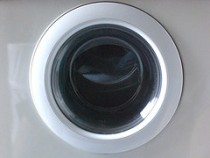8 Reasons Why Your Washing Machine is Humming

With our busy lifestyles and barely enough time to do the things we need to do, let alone want to do, just about the last thing you want to deal with is a troublesome washing machine. Aside from not being able to do your laundry, you also have to worry about finding a reputable engineer, arranging a time that is convenient and the cost of the whole thing, including call-out fees and labour.
Don’t despair; if the problem isn’t serious you can probably fix it yourself. For example, one of the most common problems to affect washing machines is a humming noise. Take a look at our troubleshooting tips and you might be able to fix the problem yourself. However, remember not to do anything that will violate the warranty.
Need Home Appliance Insurance? – Cover for all your home appliances Click Here for a quote!
Humming problems
- Drain hose: If the washing machine is functioning correctly but makes a humming sound while draining, there could be a problem with the drain hose. Replacing the drain hose may solve your problem, but if the hose is fine, and there’s still a humming sound it could mean there’s something wrong with the water supply.
- Water supply: If the washing machines does not take in water and makes an unusual humming sound, it could be that the water isn’t flowing. Check to see if there is proper water supply to the washing machine. First check that the taps are actually on. Then unplug the washing machine and turn off the taps supplying water to it. Unscrew the fill hoses from the water valve. Hold the hose over a bucket and turn on the taps to see if there is a decent water supply coming through the hose.
If the water flow is adequate, then check for any blockage in the water valve’s filter. Although this fault is rare, it can occur. Gently remove the water valve filter with flat pliers and clean the filter. Be careful, as most filters are made of brittle plastic and can easily break.
If the water flow is slow or if there is no water coming through the hose, then there is likely a fault with the plumbing. In cold weather, the pipes may have frozen, particularly if the washing machine is in the garage. - Carbon brushes in the motor: If you switch on the machine and it makes a humming sound as though it is working but the drum does not turn, then the most common explanation is worn out carbon brushes in the motor. The brushes (located on both sides of the motor) are inexpensive to replace. If they are not worn then there is likely a fault with the motor itself or the printed circuit board.
- Drive motor: If the washing machine does not drain water, spin, or agitate, and just makes a humming sound accompanied with a slight electrical burning smell, then you are likely dealing with a failing drive motor. At this point you will have to call the manufacture’s customer service help line for further assistance.
- Washer motor: If the washer motor has burned out you may hear a hum or buzz and you will probably smell something burning. A burned out washer motor can be replaced, but often it is more cost-effective to simply buy a new washing machine because the motor usually precursor to other parts giving up the ghost. You may just enter a cycle of repairing and replacing parts, which racks up costs.
- Washing machine pump: The gentle humming noise may be caused by a jammed pump trying to turn. The most common explanation for the pump not spinning is a small garment caught in the pump. There’s no other way to fix this problem other than taking the machine apart so that you can remove the stuck item. The problem may also be due to bearing failure, in which case the pump has to be replaced. It is best to call an appliance technician to carry out professional repairs.
- Motor coupling: It may also be that the motor coupling has broken, especially if the humming sound seems to have a vibration to it. In this case you will have to take the machine apart. If you’re feeling brave and aren’t afraid of voiding your warranty, you can Google for directions how to take apart your particularly make and model. You can also check YouTube for video tutorials. You can usually find different washer parts you need online, so all you need is a free afternoon and an assistant to keep the coffee coming to get your DIY fix.
- Washer drive block: If the washer drive block is loose or worn down you’ll have to replace it. This link will take you to the most well-known brands where you’ll find step by step instructions on how to fix or replace the drive block on your washer. If your make isn’t on the list, just do a YouTube search and there’s bound to be one for your particular make. Once again, you shouldn’t try this if you don’t have any successful DIY experiences under your belt and if you don’t want to negate your warranty.
